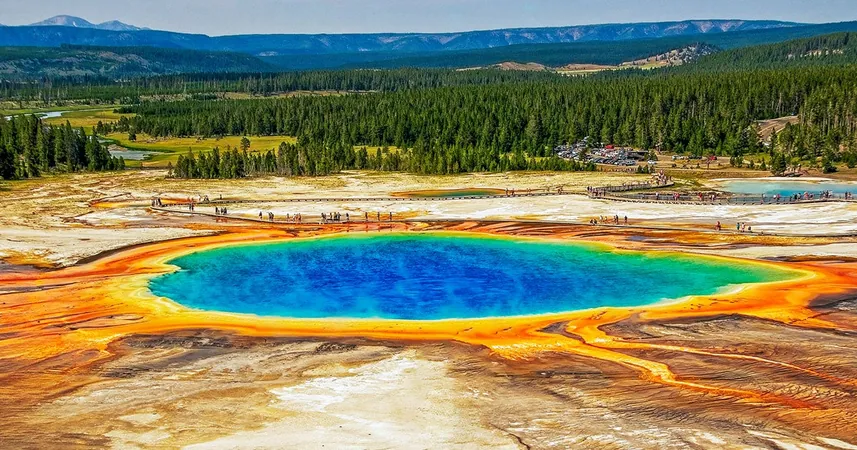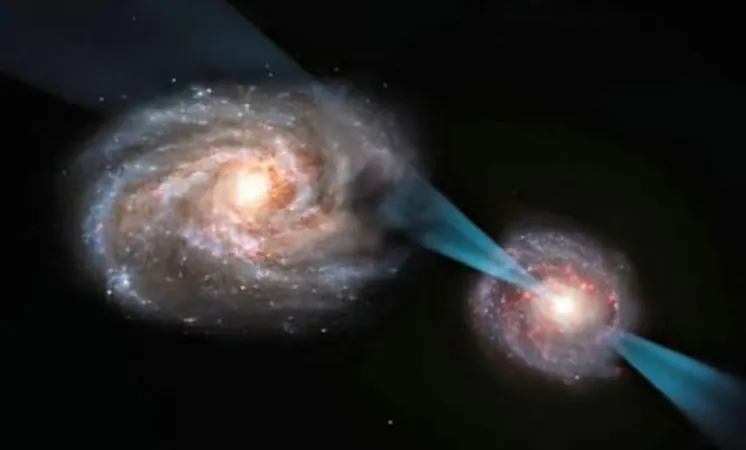
Unveiling Yellowstone's Hidden Restraint: What’s Stopping the Supervolcano from Erupting?
2025-05-03
Author: Wei
Recent research reveals a mysterious force is likely preventing the Yellowstone supervolcano from erupting. Brace yourself for the revelation: a massive ‘lid’ composed of magma might be keeping the pressure contained.
The Volatile Mystery BeneathOur Feet
In a groundbreaking study published in the prestigious journal Nature, scientists have unearthed a "volatile-rich cap" just 2.36 miles below the surface of Yellowstone National Park. This subterranean ceiling is theorized to be the crucial factor staving off a potential eruption—a cataclysmic event historically known to reshape landscapes and threaten life as we know it.
Brandon Schmandt, a lead researcher and professor at Rice University, expressed the long-standing questions surrounding the depth and structure of the magma reservoir. "We’ve always known there’s magma beneath Yellowstone, but we’ve just uncovered that it remains dynamic—even after millions of years,” he explained.
Mapping the Unseen
To chart this concealed environment, researchers deployed a specialized vehicle known as a "vibroseis" truck, typically utilized in oil and gas explorations. This heavy-duty machinery generates minor earthquakes by sending seismic waves deep into the Earth, revealing a striking boundary lying just over two miles underground.
Surprisingly, the data indicated considerable irregularities at the magma reservoir's upper boundary. Schmandt noted, "Finding such a strong reflector at that depth was unexpected, hinting at something significant—a buildup of hot, partially molten rock filled with gas bubbles."
Gas Trapped Yet Controlled
Through innovative computer simulations, the team discovered that gases like steam and carbon dioxide are restrained, allowing them to slowly escape rather than erupting violently. Schmandt clarified, "While we found a layer rich in volatiles, the levels present are not indicative of an imminent eruption. The system seems to be effectively venting gas through tiny cracks, a quality consistent with Yellowstone's numerous hydrothermal features. Together, these phenomena suggest that Yellowstone remains a controlled and active geological wonder.
A New Era of Monitoring
This pioneering research could pave the way for advanced monitoring techniques that may provide an early warning of volcanic activity. "Understanding what's happening beneath us is crucial for everything from exploring geothermal energy to safely storing carbon dioxide," Schmandt added.
Keep an eye on Yellowstone—this supervolcano holds secrets that could redefine our future, and scientists are just beginning to uncover its mysteries!



 Brasil (PT)
Brasil (PT)
 Canada (EN)
Canada (EN)
 Chile (ES)
Chile (ES)
 Česko (CS)
Česko (CS)
 대한민국 (KO)
대한민국 (KO)
 España (ES)
España (ES)
 France (FR)
France (FR)
 Hong Kong (EN)
Hong Kong (EN)
 Italia (IT)
Italia (IT)
 日本 (JA)
日本 (JA)
 Magyarország (HU)
Magyarország (HU)
 Norge (NO)
Norge (NO)
 Polska (PL)
Polska (PL)
 Schweiz (DE)
Schweiz (DE)
 Singapore (EN)
Singapore (EN)
 Sverige (SV)
Sverige (SV)
 Suomi (FI)
Suomi (FI)
 Türkiye (TR)
Türkiye (TR)
 الإمارات العربية المتحدة (AR)
الإمارات العربية المتحدة (AR)